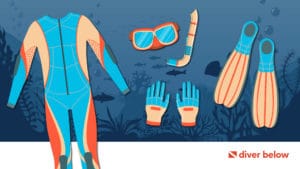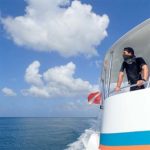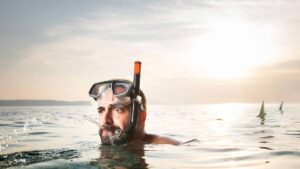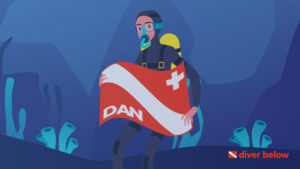Heading out into open waters can be an intoxicating, fulfilling experience.
There isn’t anything quite like it.
But before you play with dolphins or sight-see those incredible coral reefs, you must have the best snorkel gear to get you there.
As with any industry, the snorkel gear industry is a multi-million dollar beast.
It can be easy to fall into advertising traps and find equipment that isn’t up to par.
You must know what you’re looking for before you shell out hundreds of dollars on expensive gear.
That’s why we’ve created this list so that any snorkeler or diver – from beginner to expert – can find the best gear with ease.
Read on for more information!
Contents
- What is Snorkel Gear?
- The Gear You’ll Need is Dependent on the Type of Diving
- Essential Snorkeling Gear: The Basics
- Scuba Diving Gear: Leveling Up
- How Much Does Snorkel Gear Cost?
- Renting vs. Buying
- Where to Buy Snorkeling Equipment
- Things to Keep in Mind When Buying Snorkel Gear
- Frequently Asked Questions
- Final Thoughts
What is Snorkel Gear?
Snorkeling equipment is the materials you need to go from being a land-walker to swimming comfortably underwater.
Since we can’t breathe underwater, you’ll need essential equipment like scuba tanks, flippers, and a snorkeling mask.
But there are also lots of other materials that go into having the proper scuba diving gear.
What Gear Do I Need?
You’ll need lots of different types of gear.
Even if you’re just diving in warmer oceans, you’ll still need several items.
Before you hit the water, you’ll need gear like:
- Fins (full foot or open-heel fins)
- Dry Suit
- Mask and mask straps (both a primary and backup)
- Wing-type BCD and harness
- Compass
- Snorkel vest
- A primary and secondary regulator
- Twin cylinders, decompression cylinders/stage bottles
- Delayed surface marker buoy (DSMB)
- Emergency signaling devices
- Purge valve
- Z-knife, shears
- And more
While this may seem like a lot, you’ll never know what you’ll encounter when you hit the open water.
All of this gear is critical for your safety and well-being.
Plus, being comfortable underwater means you have a more enjoyable snorkeling and diving experience.
The Gear You’ll Need is Dependent on the Type of Diving
A lot of the gear you need is dependent on the type of diving you plan to do.
Let’s look at something as simple as weights.
Dive weights are an integral part of diving that allows divers to stay correctly positioned underwater.
Yet, the amount of weight you need is drastically different between saltwater and freshwater.
In fact, saltwater is 2.5 pounds heavier than freshwater, which means you’ll need that much weight to counteract your buoyancy in saltwater than fresh.
And that’s just one example of how different waters require different amounts of gear.
When you dive in tropical waters, you’ll need less gear than if you were dipping in colder waters.
For tropical waters (aka waters that are 24ºC/75ºF or warmer), you need minimal protection and can wear a lightweight wetsuit and other lighter gear.
When you dive in colder waters, you need to protect your body with a heavier wet suit and heavier protection.
Thicker wetsuits are a must, as are gloves, thicker boots, and so forth.
Essential Snorkeling Gear: The Basics
If you’re just starting your scuba diving adventures, you need to equip yourself with the gear terminology.
Below is a breakdown of some essential gear you’ll need before your first dive.

Scuba Mask
Full-face snorkeling masks are one of the most well-known pieces of scuba equipment.
A diving mask (also half mask, dive mask, onda mask, or scuba mask) is an item of diving equipment that allows underwater scuba divers, free-divers, and snorkelers, to see underwater.
When you buy a full-face mask (especially your first mask), you should go into a dive store and try one on.
You need to be on the lookout to make sure the scuba masks’ silicon skirt runs along your whole face and can seal out water to prevent a leak.
You also should not use a plastic lens or lenses because this can break when scuba diving.
While some fog is inevitable, make sure the fog isn’t too extreme by trying the mask in store.
Most good snorkel masks typically cost around $45.
However, a top snorkel mask can run up to $150 or more.
Snorkel
Even though this may seem like a straightforward piece of material, the snorkel is a little more complicated than meets the eye.
There are a few variations of the snorkel that you can buy, and it all depends on personal preference.
You can choose between the traditional J snorkel, the semi-dry snorkel, and the dry snorkel.
One thing you need to be wary of when buying is to make sure the mouthpiece fits well.
It’s easy to accidentally get a snorkel with too big or too small of a mouthpiece, but this will lead to discomfort during your dive.
Additionally, you must learn how to connect the snorkel to your mask and ensure it includes the connector when selecting a snorkel.
This requires you to try it on in the store because all of your pieces must fit together.
If not, you will have a hard time underwater.
A tube without the mask typically costs users between $20 and $70.
Scuba Fins
There is much variety when it comes to shopping for scuba fins.
Split fins, blade fins, pivot fins, open heel, full foot fins are just some of the many styles of scuba fins.
All of these styles and variations are beneficial for varying types of water and dive types.
Some fins are better suited for colder dives, some fins emphasize speed, and others are tailored to helping you conserve energy for those longer dives.
When purchasing a scuba fin, you want to make sure they fit well.
They should feel comfortable, and your heel should not be able to slip off.
To make sure they fit, lift your heel off the ground while putting pressure on your toes.
If your heel slips from its heel strap, the fins are too big.
Most fins you can find are as low as $75, but quality fins can run up as much as $250.
Booties
Dive booties are the materials you wear underneath your fins to protect your feet from rough edges and cooler temperatures.
Booties are a bit of a hybrid between dive socks and dive boots; as such, booties are best for moderate temperatures.
Most booties you’ll find are made from Neoprene Polychloroprene.
This is a synthetic rubber material that typically ranges between 2mm to 7 mm.
The rubber allows the bootie to mold to the shape of your feet.
Additionally, the thickness protects your body from temps and hazards.
You can buy booties in two types.
They come in high tops that cover the ankles and low tops that start below the ankles.
You may want to purchase high tops if you are diving around a lot of coral and rocks to ensure maximum protection of your ankle.
If you’re snorkeling in calmer, warmer waters, a low top should be sufficient.
When you buy your booties, make sure they fit similarly to a show.
They should feel comfortable and snug, but they shouldn’t pinch or feel too constricting.
Keep in mind that since they are rubber, they will be rigid to start.
The more you use them, the looser and comfortable they will become.
Booties typically cost between $20 and $80.
Wetsuit or Rash Guard
A wetsuit and a rash guard are two variations of the same idea.
A rash guard is a form-fitting compression shirt that molds your body.
The wetsuit is to keep users warm in cold environments.
As a result, it’s stiffer, heavier, but much more insulated than a rash guard.
The type you need depends on the type of water you plan to dive in.
When shopping for a rash guard, make sure that you buy one with built-in SPF protection.
Make sure to try it on in the store.
While the point of a rash guard is that it’s a tight fit, it shouldn’t be too uncomfortable.
If you think it’s so tight that it might take away from the quality of your dive, then that’s too tight.
You also should look for a splash guard, which is a feature that minimizes water entering the clothing.
Wetsuits can cover the entire body or stop at the knee and elbow, and the material and thickness can vary widely.
Your wetsuit should be snug but not suffocating.
You also want to check out the seams and quality of make.
Inspect the suit carefully to make sure there are no rips, tears, or loose seams.
Not only would that be a waste of money, but tears in your suit can cause an issue with diving once you’re underwater.
The best rash guards usually costs between $20 and $60.
Wetsuits have a much broader range.
Starter suits cost between $50 and $75.
If you plan to buy a premier suit, you can expect to pay closer to $300-$500.
Mesh Gear Bag
So, you have all this great gear but nowhere to store it.
That’s where the mesh bag comes in handy.
Novice snorkelers need a mesh bag to pack and transport their mask, snorkel, and fins from drawstring to duffle bags.
Because the bag is made of mesh, all of your gear should try quickly.
When you purchase a mesh bag, make sure the gear you have can comfortably fit.
Also, make sure that it’s quality made, so the seams don’t unravel within a few scuba trips.
Larger mesh bags cost between $40 and $150.
Smaller mesh bags (that can hold maybe a mask or a wallet) cost around $20.
Scuba Diving Gear: Leveling Up
But wait, there’s more!
These are the next pieces of equipment in snorkel kits you might want to purchase if you plan to dive regularly and don’t want to rent.
Scuba BCD
The scuba BCD is arguably one of the most essential pieces of your gear.
BCD or BC stands for buoyancy compensator, which is a mechanism that counteracts your natural buoyancy, holds your gear in place, and allows you to make a safe ascension.
The key to a successful BCD is having it fit properly.
When you try on a BCD, make sure to try it over the suit you wear the most.
The BCD should fit comfortably and not squeeze you when you inflate it.
When trying a BCD on, inflate the BCD until the overflow valve vents.
Notice how comfortable or uncomfortable you are.
Is your breathing restricted? Do you feel an uncomfortable amount of pressure?
Can you access all of the pockets and strap easily enough?
Can you press all the buttons easily and with one hand?
One of the more important features is the inflator hose.
This piece must be easy to reach, and you must be able to extend it over your head.
A BCD regulator is certainly one of the more pricey gear options available.
You can find a BCD regulator for $300, but many of them reach $1000 or more.
That’s why it’s so imperative that you take the time to ensure it fits; the last thing you want is to spend hundreds of dollars on a piece of equipment that causes you discomfort during your dive.
Scuba Regulator
Another critical piece of gear is the scuba regulator, which converts the high-pressure air in your tank to breathable, ambient pressure.
In addition to allowing you to breathe the air, the regulator also funnels air into other gear, like the BC inflator.
The biggest thing to look for when shopping for a scuba regulator is comfort.
You should be looking for a mouthpiece that isn’t too big or too small since this will cause an uncomfortable dive experience.
You may also need to have staff at your dive shop help you select the right length for you.
Most prices range from $225 to $1,600.
SPG or Dive Computer
A dive computer is a helpful tool that recalculates your no-decompression status by monitoring depth and bottom time.
The computer also monitors your tank pressure and ascent rate.
When buying a dive computer, make sure you buy one that is more conservative in its calculations.
Some build in wide safety margins, which creates a safer product.
The typical price range falls between $300 to $1,300.
How Much Does Snorkel Gear Cost?
It depends on how much gear you wish to buy.
As you probably noticed, there’s a lot of equipment, and not all of it is necessary to buy all at once.
So, should you rent or buy? How much? All of it?
Let’s take a look.
How Much Does Snorkel Gear Cost to Buy?
It’s hard to say because there’s so much gear with so many different ranges of prices.
When divers start out, they typically spend anywhere between $100 and $200 on items like a scuba mask, boots, and fins.
If you want to add a wetsuit into that mix, it will cost you more, maybe closer to $350.
Altogether, you can usually buy most of the gear for around $400.
That’s a steep price – especially if you’re still getting your feet wet (pun intended) in the sport and don’t know if it’s for you.
That’s why snorkelers and divers who are just starting may want to partially or fully rent gear before making such a hefty monetary commitment.
How Much Does SnorkelGear Cost to Rent?
It’s not unusual for a day price for all the gear to land, around 60.00.
Most dive shops will let you rent out individual items a la cart, so it probably won’t cost as much money as that if you already have some gear with you.
Renting vs. Buying
Renting and buying have their individual benefits and drawbacks.
Let’s look at some pros and cons so you can determine if you should rent or buy.
Pros and Cons of Renting Snorkeling Gear
Cons is that a lot of the gear is not high-quality and has been used over and over, so it might be a little worn.
The benefit is you don’t need to lug it around to your destination, and it’s certainly less of a commitment if you’re new to the hobby.
If you plan to dive more than 20 days of the year, you can see that it’ll be around the same price.
Pros and Cons of Buying Snorkeling Gear
Buying scuba gear is a great option if you plan to dive a lot.
You have complete control over your gear, the quality of your gear, and how well it fits.
You’re also in control of taking care of it, so you know some rookie diver won’t bang anything up.
The obvious downside, of course, is the hefty investment.
Also, it can be troublesome to lug your equipment on a plane if you plan to do destination diving events.
Some divers choose to buy most of their equipment and then rent the heavier items once they arrive at their destination.
My Suggestion: Try Before You Buy
Don’t buy all at once, but instead, possibly rent your gear before you buy it.
Otherwise, if you don’t like scuba diving, you’ll have wasted money on the gear.
Where to Buy Snorkeling Equipment
While the dive store is the most logical answer, you can buy snorkeling equipment from many places, including online or through scuba catalogs.
Some places are better suited than others, especially if you’re a beginner who may need a bit of guidance.
Dive Store (Best for New Snorkeling Gear)
If you’re a new diver, you should really go to a physical dive store to buy all of your equipment.
Even if you are a veteran diver, if you’re trying out new gear for the first time, you should still go into the store to get a sense of the equipment, how it feels, and how it fits on your body before you make a purchase.
Additionally, the staff should be well-versed on how all of the equipment should fit.
Plus, if they don’t have a particular item, they can advise you on finding it or ordering for you in the store.
However, this option is certainly the less convenient option of them all as you have to go to a physical location.
Online
While online is undoubtedly the most convenient, divers should only purchase gear online if they’re just ordering replacement materials.
Some divers make the mistake of ordering new gear, and then when they get it, it doesn’t fit.
Not only does this waste time, but you also may run into issues with returning the equipment, and it’s possible to lose money.
Private Party (Best for Cheap Scuba Gear)
The diving community is small, and once you’re in, you’re in.
You can check Facebook groups or Craigslist for private parties.
Often, you will find divers selling their old equipment as they are upgrading to more expensive gear.
This is an excellent option for looking for used material that still works without upfront making such a hefty investment.
Check out your local community to see if anyone is selling used material now.
Catalogs
Scuba catalogs are another way to go.
This may be the least popular option, but it’s still an excellent place to look for specialty items.
If you’re cued into the scuba and snorkel world, subscribe to catalogs.
Often they have great deals that you wouldn’t necessarily find online.
Things to Keep in Mind When Buying Snorkel Gear
It’s easy to get overwhelmed as a new diver.
There’s a lot to gear, and there’s a lot to remember.
Here are some helpful tips before you take the plunge into buying your new snorkel gear.
Do Your Research
Research, research, research.
The key to a successful buy is to fully understand what makes a great scuba mask or fins and research with other scuba divers to avoid pitfalls like marketing traps or poor manufacturers.
Talk to your scuba community to understand what you need to be on the lookout for and what you need to avoid.
Having a strong understanding of the product never hurts, either.
Don’t Buy Everything All At Once
If you buy your gear gradually over time, not only will you gain a better understanding of what you need, but it also feels like much less money.
Plus, renting from dive shops gives you a good idea of what you’re looking for and what you’re not.
You’ll learn so much by using this equipment in the water that when the time comes for you to make that purchase in a dive shop, you’ll feel all the more confident in your purchase.
Maintain Your Gear
Maintaining your snorkel gear will last years, which reduces costs for you in the long run.
Some of this material and equipment costs hundreds of dollars.
When you put all of the gear together, that’s quite the investment.
Maintain your gear by cleaning it and making repairs as soon as a piece needs to be fixed.
Frequently Asked Questions
Here are the answers to some frequently asked questions about buying snorkel, scuba, and diving gear.
Can you bring snorkel gear on a plane?
You can bring some scuba gear on a plane, although you will have to check your equipment in most cases, especially if it’s dangerous.
For example, you would have to check your scuba spear for apparent reasons.
Keep in mind that most flights have weight limits, so bake this into your travel plans.
In some cases, it might be beneficial to rent some of the heavier, more expensive gear once you’re already on location from one of the local dive shops.
Can you sell snorkel gear?
You can sell old snorkel gear, but most people tend to take old equipment into a shop and see what the staff thinks; either they can buy it off you or advise what to do with it.
Final Thoughts
Purchasing snorkel gear can feel overwhelming.
How could it not? All of this gear is tremendously important.
Not only does it give you a comfortable, enjoyable dive underwater, but all of this gear is paramount to your safety.
But learning about the gear and what you need is all part of the diving experience.
It will take a lot of trial and error, but with enough experience, you’ll get the hang out of what equipment you need (and what you don’t need).
Whether you’re buying gear for kids or for yourself, if you’re considering buying gear, make sure to start with the smaller equipment first.
Buy a scuba mask before you buy a 500 dollar wetsuit.
Check out your local dive shop to start buying gear today.





